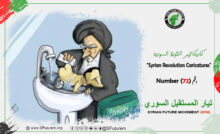Media campaigns and changing trends

Goal: The research paper aims to introduce the principles of media campaigns in changing trends in society.
Paper Outline
- Introduction
- Media Campaigns and Changing Trends
- Conclusion
Introduction
A trend is a concept that describes the ideas, decisions, stances, or methods related to an individual or group, and it becomes evident when interacting with a subject, situation, or issue.
The research designs a strategy for changing trends in media awareness campaigns that can assist in selecting messages and design elements, making the possibility of changing trends on specific topics achievable.
Media Campaigns and Changing Trends
Media campaigns seek to change people’s trends regarding a subject or issue to make it more positive and closer to both individual and societal development, with the aim of supporting existing trends or modifying them and turning them into effective behavior.
Among the models agreed upon by researchers that have an impact on changing individual trends and can be applied in media campaigns are the following:
- Stimulus and Response Design: This design is based on research results that show education as one of the objectives of a media campaign (spreading knowledge, changing or supporting trends, adopting behavior). It occurs through association and repetition, aiming to link a stimulus with a response. The applications of this design in the field of communication have been reflected in defining new meanings for words—whether these meanings are semantic or implicit, carrying emotional dimensions. This design is frequently used in media campaigns with educational and informational goals by alerting individuals to a phenomenon and attempting to create the desired response.
- Motivational Design: Study results have concluded that individuals always strive to achieve goals that meet their various needs, which is expressed through Maslow’s hierarchy.
Maslow’s Hierarchy of Human Needs:

Media campaigns use this design by presenting media messages that address such needs and highlight their importance to the individual. Therefore, satisfying these needs will lead to a greater level of conviction and influence by the campaign.
Cognitive design:
The cognitive design approach relies on rational arguments and can be applied in two ways:
- Attempting to persuade through facts and information within the realm of logical discussion.
- Using the desire of others to create a sense of harmony with themselves and their surroundings by changing their attitudes, achieved by inducing a state of internal imbalance and prompting them to adopt collective behavior.
Social design:
This design is based on the idea that a person, as an individual, is simply a member of society and highly dependent on it. The social design relies on the principle of collective agreement, which contributes to changing or reinforcing prevailing attitudes. It is frequently used in cases of collective desires and inclinations towards a specific situation, such as wars.
Personality design:
This design considers the needs related to the personality structure of the targeted individuals when attempting to persuade them about the campaign’s subject.
These needs can be classified into two main categories:
- Needs for value expression
- Needs for self-defense
Conclusion:
In an era where social media has become widespread across all segments of society, implementing media plans now requires pre-set strategies that serve as clear guidelines capable of yielding results and achieving objectives.
Media campaigns and activities have increased, originating from hundreds of thousands of different media outlets—visual, auditory, and written. This has particularly occurred after the necessary tools for such campaigns became readily available and free, leading to the emergence of many different narratives, both positive and negative, all seeking to attract as many audiences as possible to gain their attention and rally them to their cause. Consequently, media campaigns advocating for a specific goal have come to be known as public mobilization campaigns or online advocacy.
Media Office
Dr. Lamis Abo Assaf
Research and Studies Department
Articles
Syrian Future Movement (SFM)






